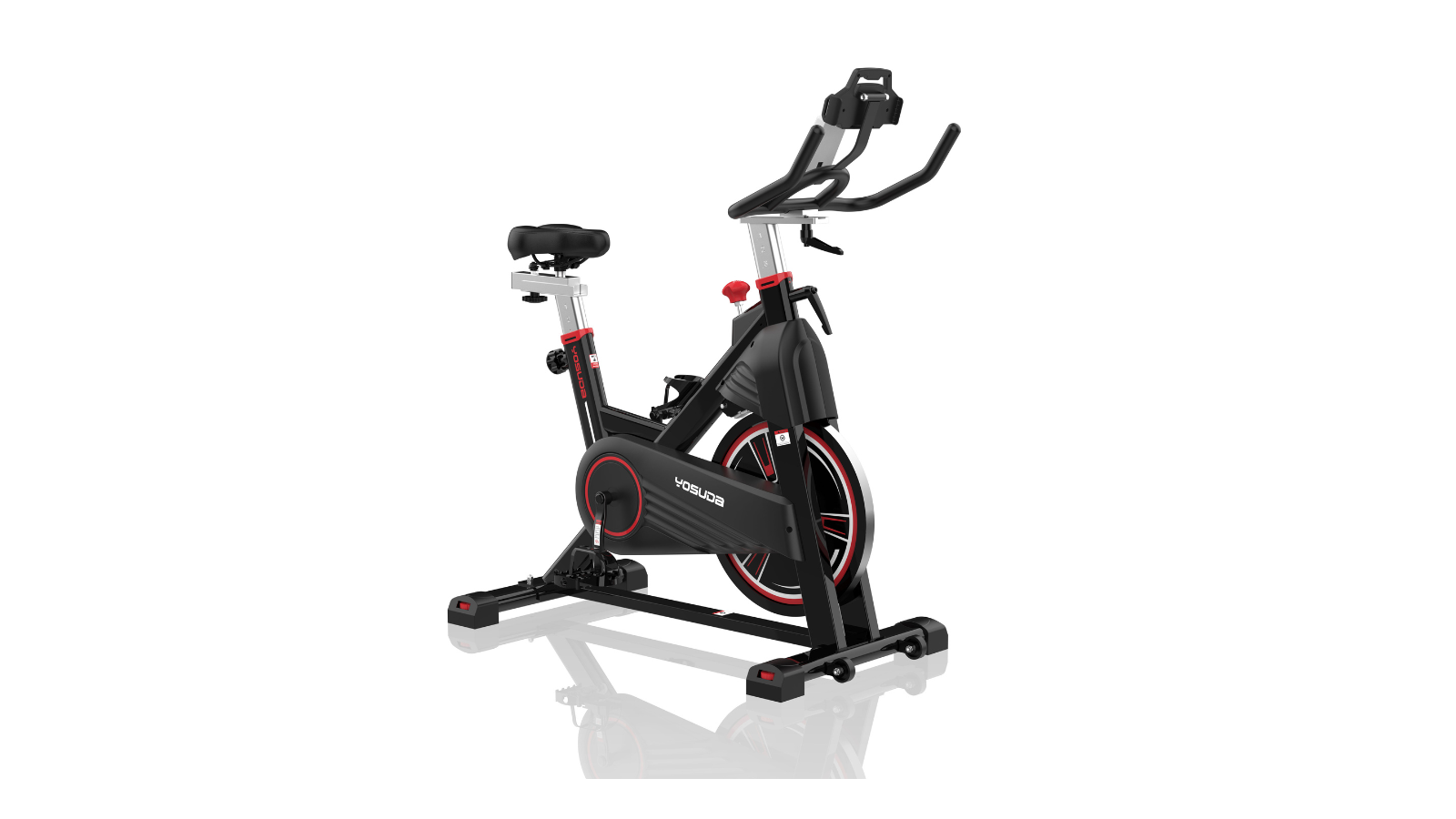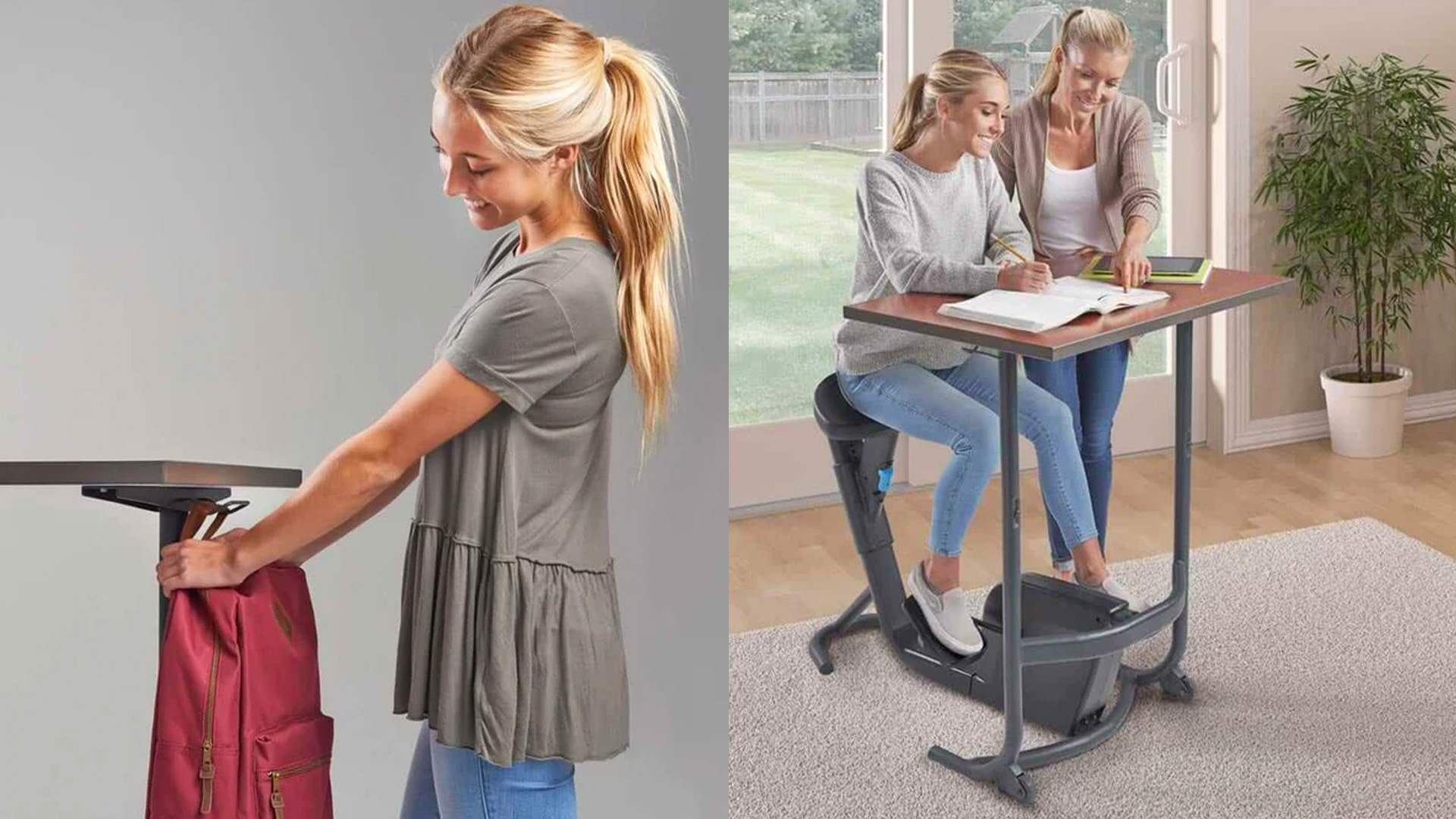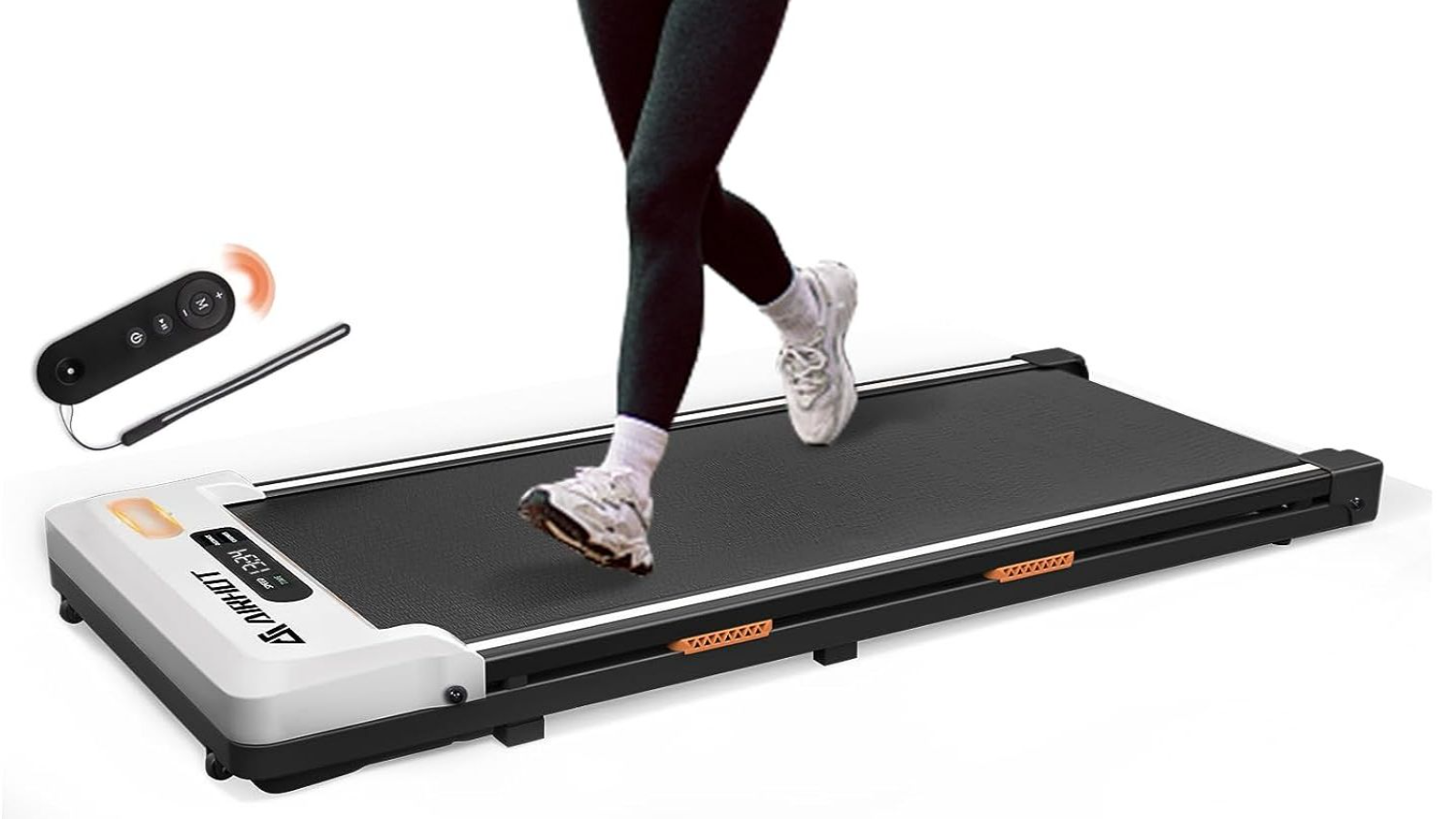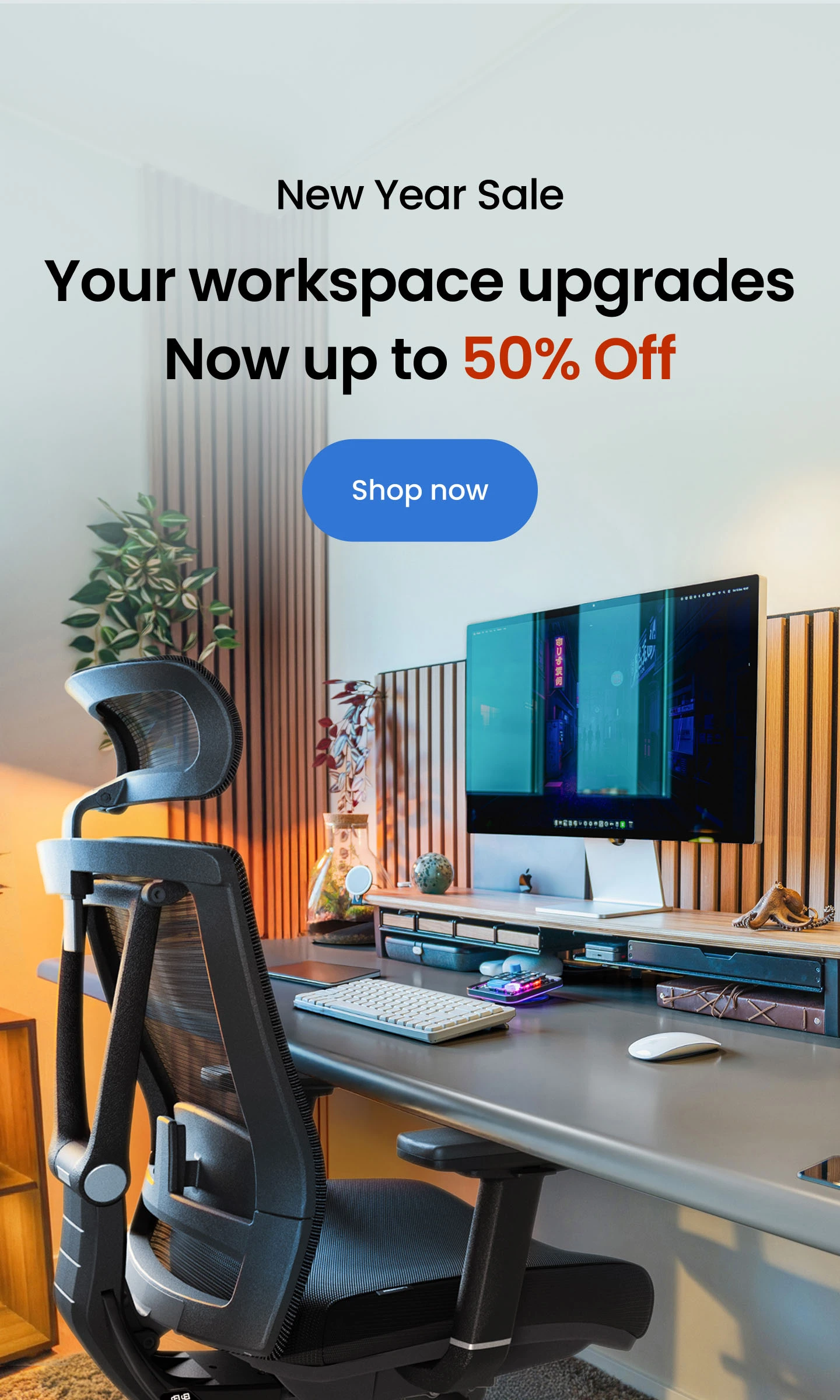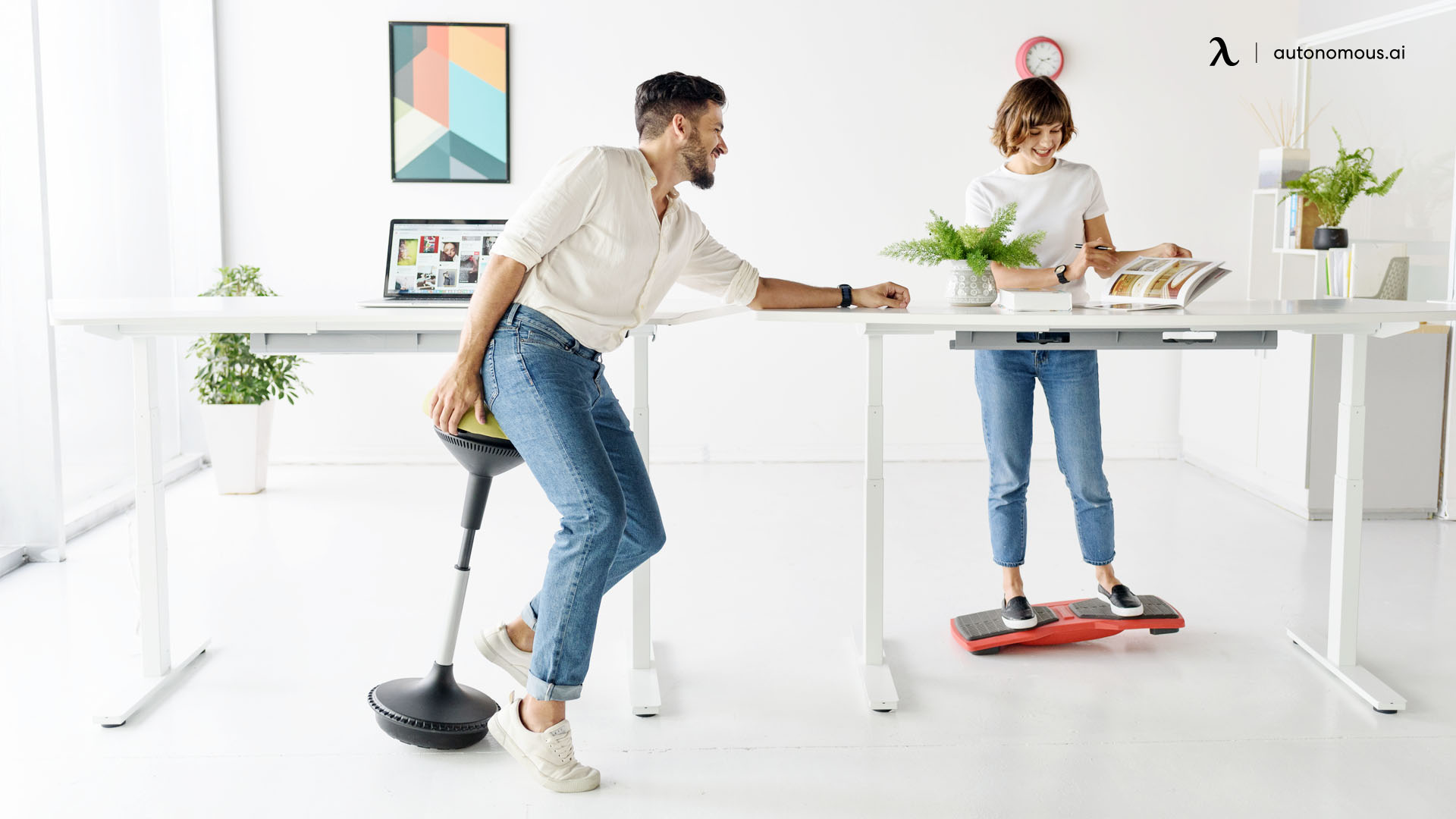
Best Exercises To Do At A Standing Desk To Feel Better
Table of Contents
As someone who’s spent years researching how our environments shape our well-being, I can confidently say that standing desks aren’t just a trend—they’re a lifestyle upgrade. But here’s the catch: standing still is just the other side of the sedentary coin. If you’re going to stand, you need to move.
I’ve used a standing desk for nearly three years now, and these exercises are what keep me alert, focused, and free of the usual neck, shoulder, and lower back complaints.
In this guide, I’ll walk you through every exercise to do at a standing desk—from subtle stretches to energizing moves—to help you stay active, focused, and pain-free during your workday.
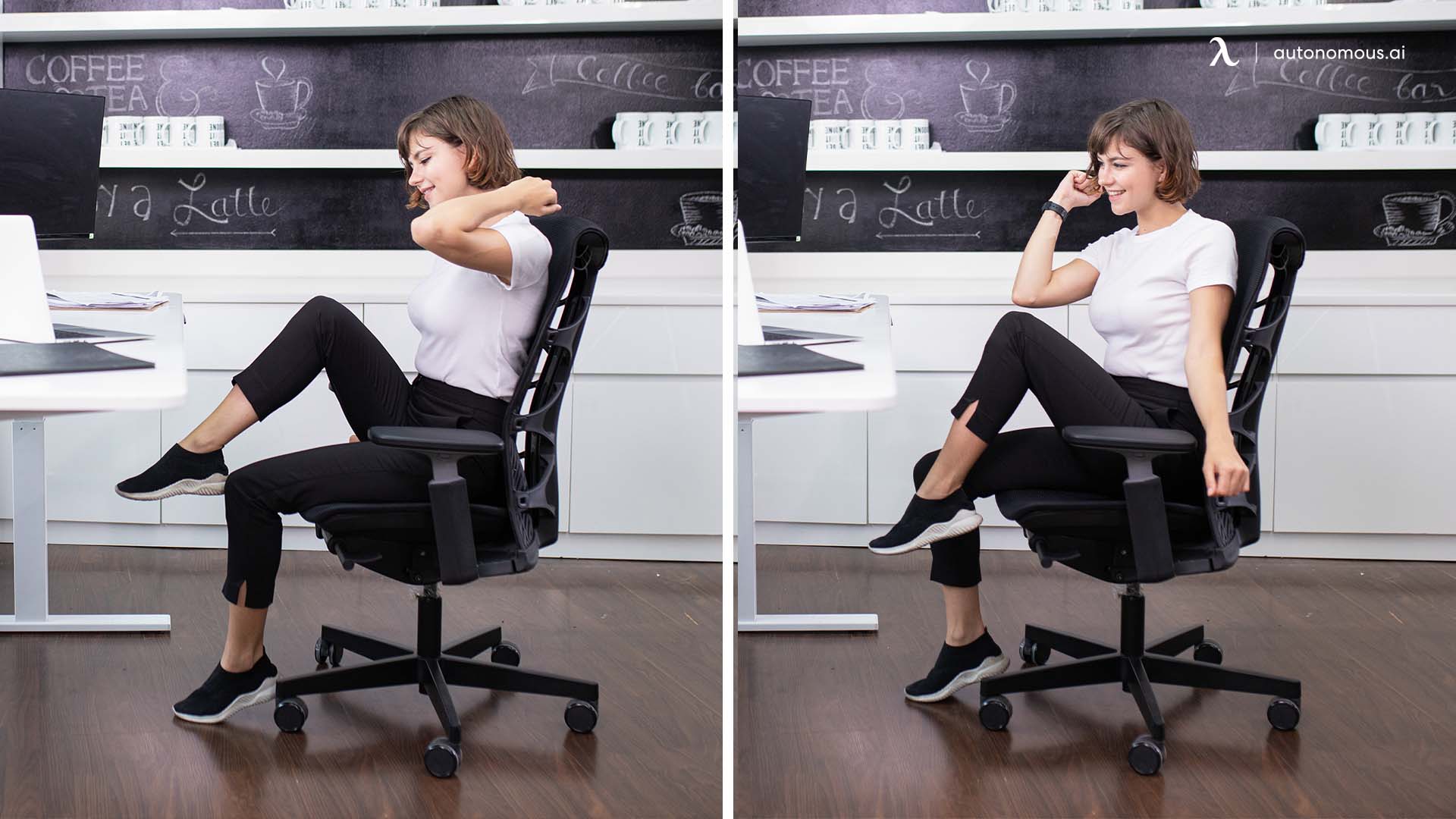
Why Standing Desk Exercises Matter
Standing desks can do wonders for posture, circulation, and even mood. There are plenty of health benefits of standing desks that make them a smart upgrade for your workspace.
You can use a standing desk for weight loss or to stay more active during the workday. But standing still for too long? That’ll get you stiff in all the wrong places.
Trust me—I learned this the hard way. My first month with a standing desk felt like a win… until my calves, hips, and lower back started complaining. What helped? A handful of simple standing desk exercises are woven into my day.
Just a few minutes of targeted movement can:
- Reduce muscle tension and joint stiffness
- Improve posture and core engagement
- Keep energy high when that 3 PM slump hits
Whether you're looking to reduce stiffness or increase daily movement, even a short exercise to do at a standing desk can make a real difference over time.
If you're not sure how often you should stand up from your desk, I find that moving every 30–60 minutes is a great starting point to stay comfortable and alert.
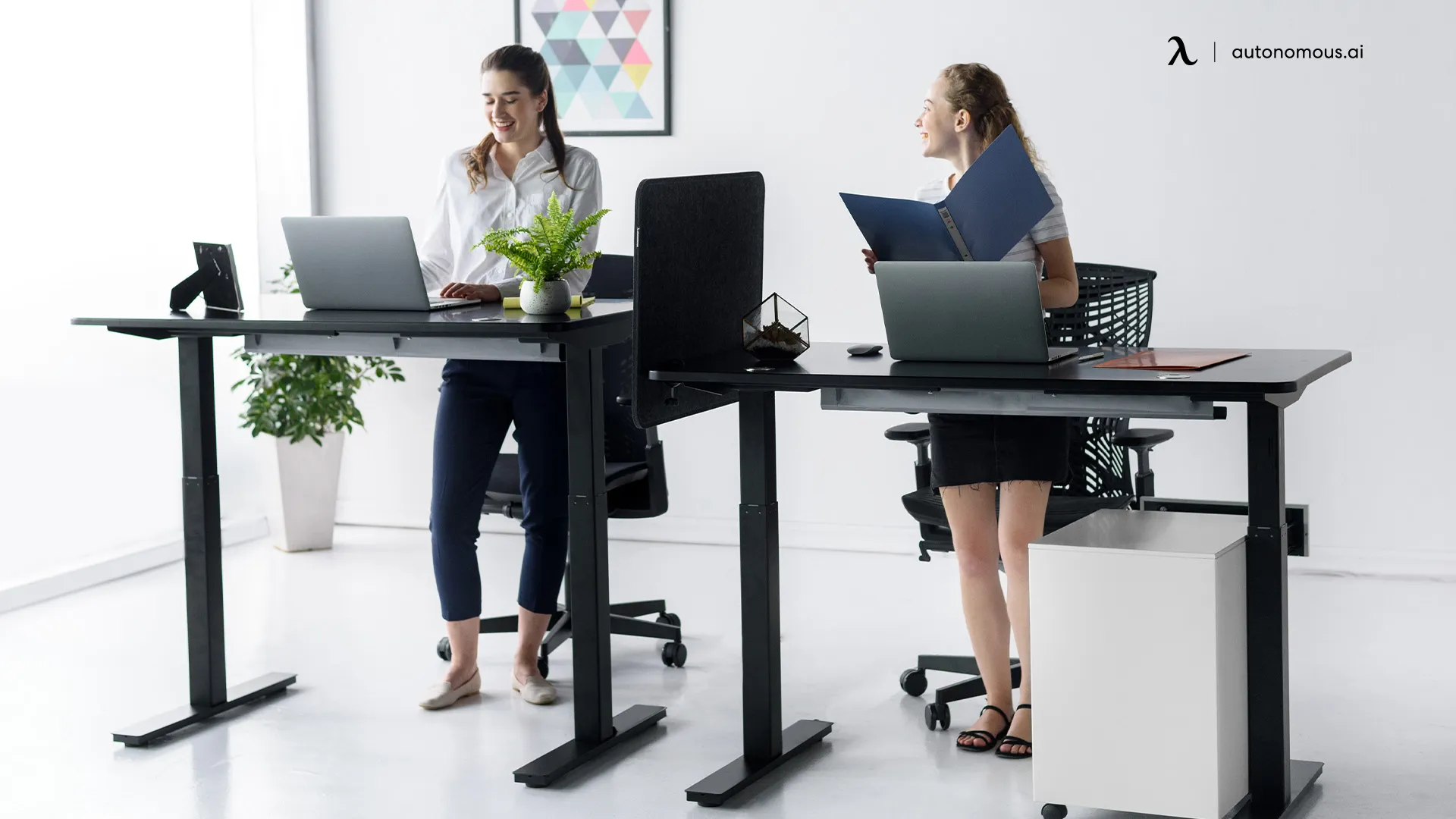
Best Standing Desk Stretches To Relieve Tension
Even with a standing desk, it’s easy to build up tension, especially in the shoulders, neck, and lower back.
Each exercise to do at a standing desk in this list is designed to improve circulation, prevent fatigue, and help you stay grounded through your workday.
1. Neck And Shoulder Stretch
Why this standing desk stretch helps:
It relieves the chronic stiffness we get from staring at screens. It helps reduce tension headaches, improves posture, and promotes relaxation in the shoulders, an area that holds a lot of stress during work hours.
How to do it:
- Stand tall with your feet shoulder-width apart.
- Gently tilt your head toward your right shoulder. You should feel a light stretch on the left side of your neck.
- Hold for 10–15 seconds, then repeat on the other side.
- For a deeper stretch, reach your opposite hand behind your back or gently rest your hand on your head without pressing down.
2. Upper Back Stretch
Why this standing desk stretch helps:
This standing desk stretch targets the thoracic spine and shoulder blades—key areas that tighten up from hours of keyboard typing. It helps decompress your spine, opens up your chest, and counteracts the forward hunch many of us develop at our desks.
How to do it:
- Extend both arms out in front of you and clasp your hands together.
- Slowly push your hands forward while rounding your upper back.
- Imagine you're hugging a big beach ball.
- Drop your head slightly between your arms and hold the position for 15–30 seconds.
3. Hip Flexor Stretch
Why this exercise to do at a standing desk helps:
When you stand (or sit) for long periods, your hip flexors can get tight and shorten over time. This stretch improves hip mobility and posture, reduces lower back strain, and enhances walking and standing endurance. It’s a must for anyone with tight hips or who stands all day.
How to do it:
- Take a step back with your right foot so you’re in a gentle lunge position.
- Keep your left knee bent and your right leg straight.
- Tuck your pelvis slightly forward to feel a stretch in the front of your right hip.
- Hold for 15–30 seconds, then switch sides.
Best Standing Desk Exercises - No Equipment
These bodyweight exercises to do at a standing desk are designed to get your blood flowing, strengthen key muscles, and re-energize your mind without leaving your workspace.
In this section, we will explore some of the best standing desk exercises you can easily do to promote a healthier and more active work environment.
1. Arm Pulses
Why this standing desk exercise while working helps:
It activates your deltoids and triceps, increases blood circulation in your upper body, and relieves stiffness from sitting or typing. It’s a great low-impact move to reset posture without distracting from your workflow.
How to do it:
- Stand with your feet hip-width apart.
- Extend both arms straight in front of you, palms facing down.
- Begin pulsing your arms up and down in small, controlled movements—about 1–2 inches of movement.
- Do this for 30–60 seconds.
2. Warrior Pose
Why this standing desk core exercise helps:
This pose strengthens the thighs, hips, and core while also opening up the chest and shoulders. It builds lower-body endurance and encourages mental focus—perfect for when you need to feel more grounded at work.
How to do it:
- Stand with your feet about 3–4 feet apart.
- Turn your right foot outward and bend your right knee, keeping the left leg straight.
- Raise both arms to shoulder height, parallel to the floor, palms down.
- Hold for 30 seconds, then switch sides.
My tip: Do this near a quiet wall or window. It’s grounding and great for resetting your mood in the middle of a hectic day.
3. Arm Circles
Why this standing desk exercise while working helps:
Arm circles improve shoulder mobility, wake up tired muscles, and prevent tension from building up after long typing sessions. They’re also great for improving posture and boosting circulation.
How to do it:
- Stand tall and extend both arms out to the sides.
- Begin making small forward circles, gradually increasing their size.
- After 30 seconds, reverse the direction.
- Keep your core engaged and shoulders relaxed throughout.
My tip: I do these before long typing sessions. Keep your neck relaxed and core engaged to avoid shrugging your shoulders.
4. Wall Sits
Why this standing desk glute exercise helps:
Wall sits strengthen your quads, hamstrings, and glutes. They also improve endurance and help support your posture when standing. I often use this one after lunch—it wakes up the legs and keeps me from getting sleepy.
How to do it:
- Find a sturdy wall. Lean your back against it and slowly slide down until your thighs are parallel to the floor—like you're sitting in an invisible chair.
- Keep your knees over your ankles and your core tight.
- Hold for 30–60 seconds.
5. Oblique Twists
Why this standing desk exercise while working helps:
Oblique twists engage your side abdominal muscles, reduce midsection stiffness, and help with spinal mobility. It’s great after long periods of standing still or when your torso feels locked up.
How to do it:
- Stand with your feet hip-width apart and place your hands on your hips or clasped in front of your chest.
- Keep your hips steady and rotate your torso from side to side.
- Do 15–20 twists on each side.
My tip: I do this every morning before starting work. It's a great way to ease into motion without jumping straight into intense activity.
6. Gluteal Squeeze
Why this standing desk glute exercise helps:
This is the most discreet move in my routine—no one will even notice! It strengthens your glutes, supports your lower back, and improves posture. A strong backside is essential for standing long periods without pain.
How to do it:
- While standing, squeeze your glute muscles (your butt) tightly and hold for 3 seconds.
- Release, then repeat 10–20 times. You can do this several times a day.
My tip: Move slowly and focus on your form. I usually do these between writing sessions when I feel tension creeping into my hips. It’s also great for improving lateral stability.
7. Squats
Why this standing desk core exercise helps:
Squats activate your glutes, thighs, calves, and core. They also promote better circulation in the lower body and help reduce fatigue from prolonged standing.
How to do it:
- Stand with your feet shoulder-width apart and your toes slightly turned out.
- Engage your core, keep your chest up, and bend your knees to lower into a squat—like sitting into a chair.
- Go as low as feels comfortable, ideally until your thighs are parallel to the floor.
- Press through your heels to stand back up. Repeat for 10–15 reps.
My tip:
Use the edge of your desk for balance if needed. I like to do 10 squats every hour as a way to stay grounded and recharge my focus.
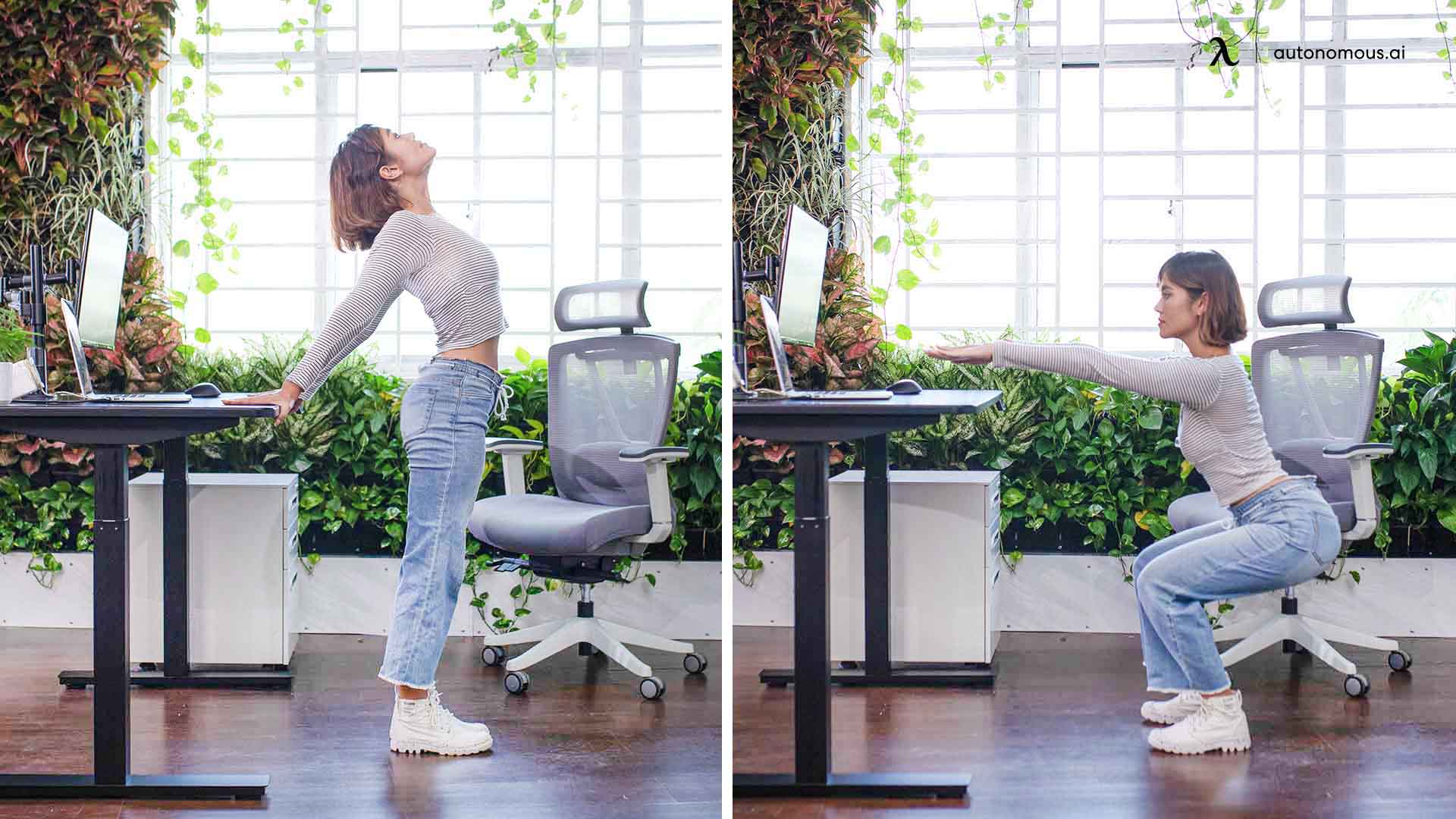
8. Abdominal Curls
Why this exercise to do at standing desk helps:
Strengthens your abs and helps support your spine, especially important if you find yourself leaning forward at the desk.
How to do it:
- While sitting or standing, cross your arms over your chest.
- Squeeze your abs and slowly curl your upper body forward just a few inches—like a tiny crunch.
- Hold for 3 seconds, then return to neutral. Repeat for 10–12 reps.
My tip: Don’t rush this one. I like doing it standing—it keeps me more aware of my posture the rest of the day.
9. Calf Raises
Why this exercise to do at standing desk helps:
This simple movement improves blood flow in your legs and strengthens the calf muscles that support your posture and stability.
How to do it:
- Stand with feet hip-width apart.
- Slowly lift your heels until you’re standing on the balls of your feet.
- Hold at the top for a few seconds, then slowly lower your heels back down. Aim for 15–20 reps.
My tip: Do these during Zoom meetings or while reading documents. I’ve found they’re a great way to stay alert without distracting from your workflow.
10. Standing Desk Pushups
Why this standing desk workout helps:
Pushups strengthen the arms, chest, shoulders, and core, helping you combat the effects of tech neck and rounded shoulders.
How to do it:
- Place your hands shoulder-width apart on your desk.
- Step your feet back to form a straight line from head to heels.
- Lower your body toward the desk by bending your elbows, then push back up. Do 10–12 reps.
My tip: Keep your core tight and avoid sagging in the middle. I like to do a quick set before meetings—it helps straighten my posture and clear my head.
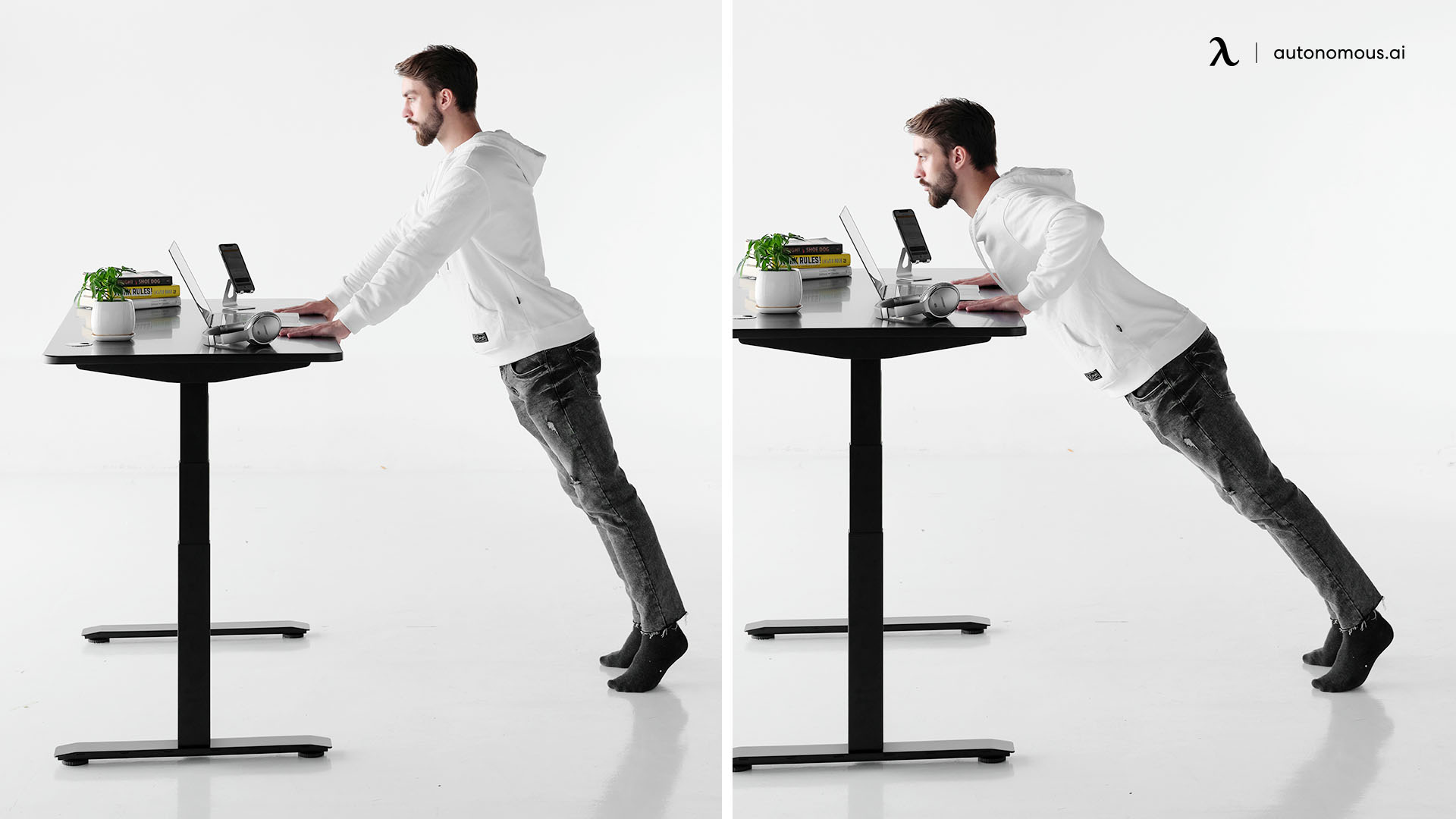
11. Side Lunges At A Standing Desk
Why this standing desk glute exercise helps:
Side lunges open up tight hip flexors and stretch the inner thighs while strengthening the outer glutes—great for those of us who alternate between sitting and standing.
How to do it:
- Start standing with your feet together.
- Step your right leg to the side and bend your right knee while keeping your left leg straight.
- Push your hips back and keep your chest lifted.
- Return to the center, then repeat on the other side. Do 8–10 reps per leg.
My tip: I do these between writing blocks when my hips feel stiff. Go slow and use your desk for balance until you feel confident.
Standing Desk Exercises With Light Equipment
Adding light fitness equipment to your standing desk routine can unlock a whole new level of movement, especially if you want to strengthen specific muscle groups, improve balance, or just switch things up. And, does a standing desk burn calories? Yes, especially when combined with active tools and intentional movement.
Before you start, make sure your desk is adjusted to the right level to support safe and comfortable movement. If you’re not sure how high your standing desk should be, getting that dialed in will help every exercise feel smoother and more effective.
Here are my favorite tools and the exact standing desk exercises to lose weight I use with them—nothing too fancy, just portable and effective.
1. Resistance Bands
Resistance bands are portable, affordable, and easy to use, making them perfect for standing desk exercises. You can anchor them to your desk or a nearby object to perform various upper and lower body movements.
- Standing Leg Abductions:
This standing desk glute exercise targets the outer hips and glutes, helping to build strength and stability, both crucial for maintaining good posture when standing.
How to do it:
Wrap a resistance band around your legs just above the knees. Stand tall, shift your weight to your left leg, and slowly lift your right leg out to the side. Keep the motion controlled and your core engaged. Lower your leg back down and repeat on the other side. Aim for 10–15 reps per leg.
My tip:
Use a fabric band if the latex ones roll up. I love doing these when I feel wobbly from standing too long—it helps re-center me.
- Bicep Curls:
Bicep curls strengthen your arms and shoulders, making it easier to lift and carry throughout the day while also supporting upper-body posture.
How to do it:
Stand in the center of your band with both feet shoulder-width apart. Hold one end of the band in each hand, palms facing forward. Curl your hands toward your shoulders while keeping your elbows close to your sides. Slowly return to start and repeat for 12–15 reps.
My tip: Do these standing desk glute exercises during phone calls—just keep your form strong and controlled. I often do a couple of sets while listening to podcasts between tasks.

2. Mini Exercise Ball (Desk Ball)
A small exercise ball can provide support and add a fun challenge to your standing desk exercises. It can be used as an alternative to a traditional chair or as a tool for stability exercises.
- Gluteal Squeeze:
This standing desk core exercise targets multiple stabilizing muscles and encourages better alignment in the hips and knees, perfect for those who experience tension from long-standing periods.
How to do it:
Place a mini exercise ball between your thighs, just above the knees. While standing, squeeze your legs inward, engaging your glutes and inner thighs. Hold for 5 seconds, then release. Repeat for 10–15 reps.
My tip: I like to sneak these in during meetings. The added resistance is subtle, but your legs and glutes will feel the difference.
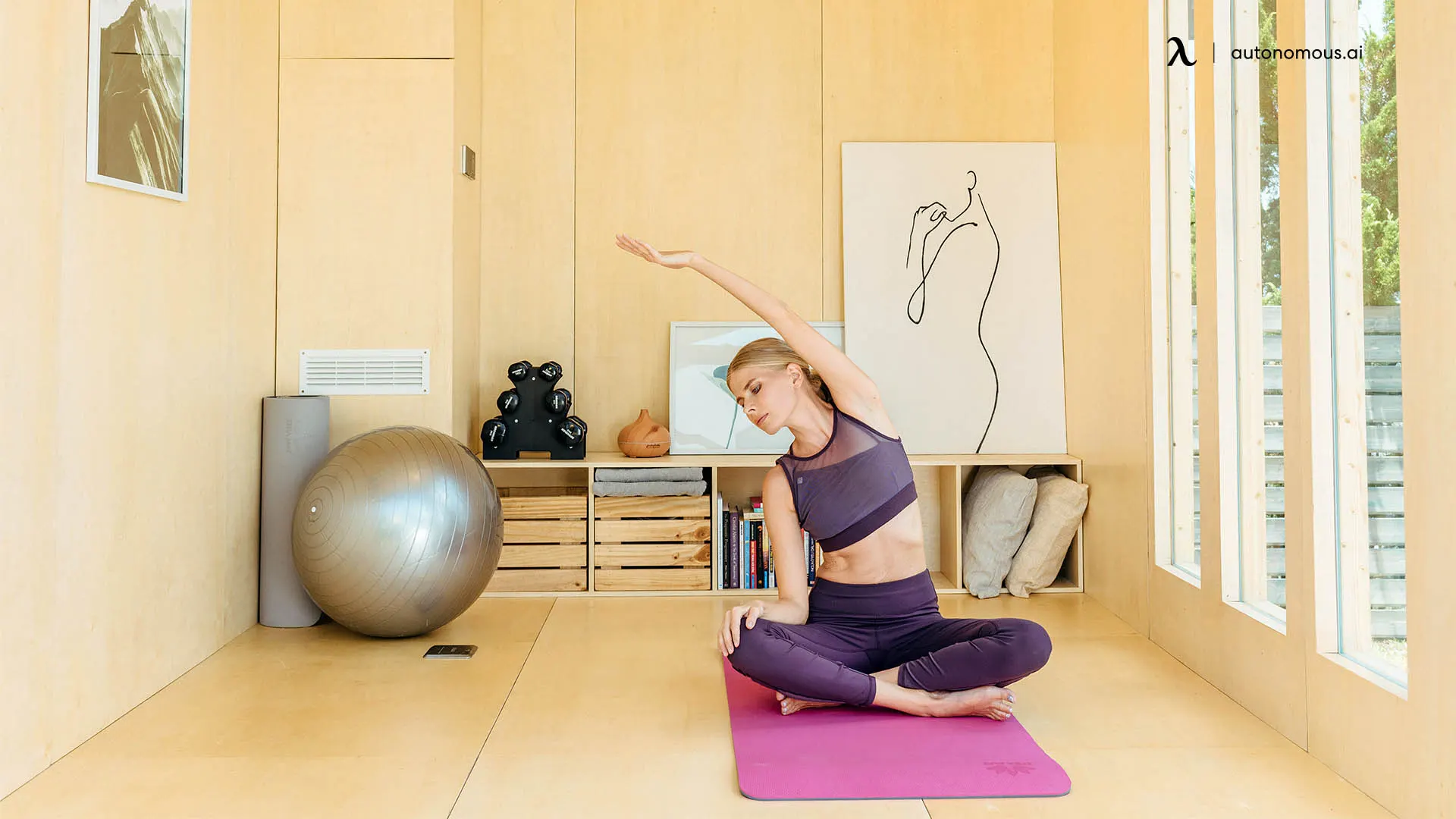
3. Dumbbells Or Kettlebells
Adding weights to your standing desk workout can help strengthen muscles and increase the intensity of your exercises.
- Dumbbell Shoulder Press:
This strengthens your shoulders and triceps, helping to support your upper body, and reduces fatigue from typing or using a mouse all day.
How to do it:
Hold a dumbbell in each hand at shoulder height with palms facing forward. Stand tall and press both weights overhead until your arms are fully extended. Lower with control and repeat for 10–12 reps.
My tip: Keep your core braced and avoid arching your back. I love doing this standing desk exercise to lose weight while standing on a balance pad—it really wakes up the whole body.
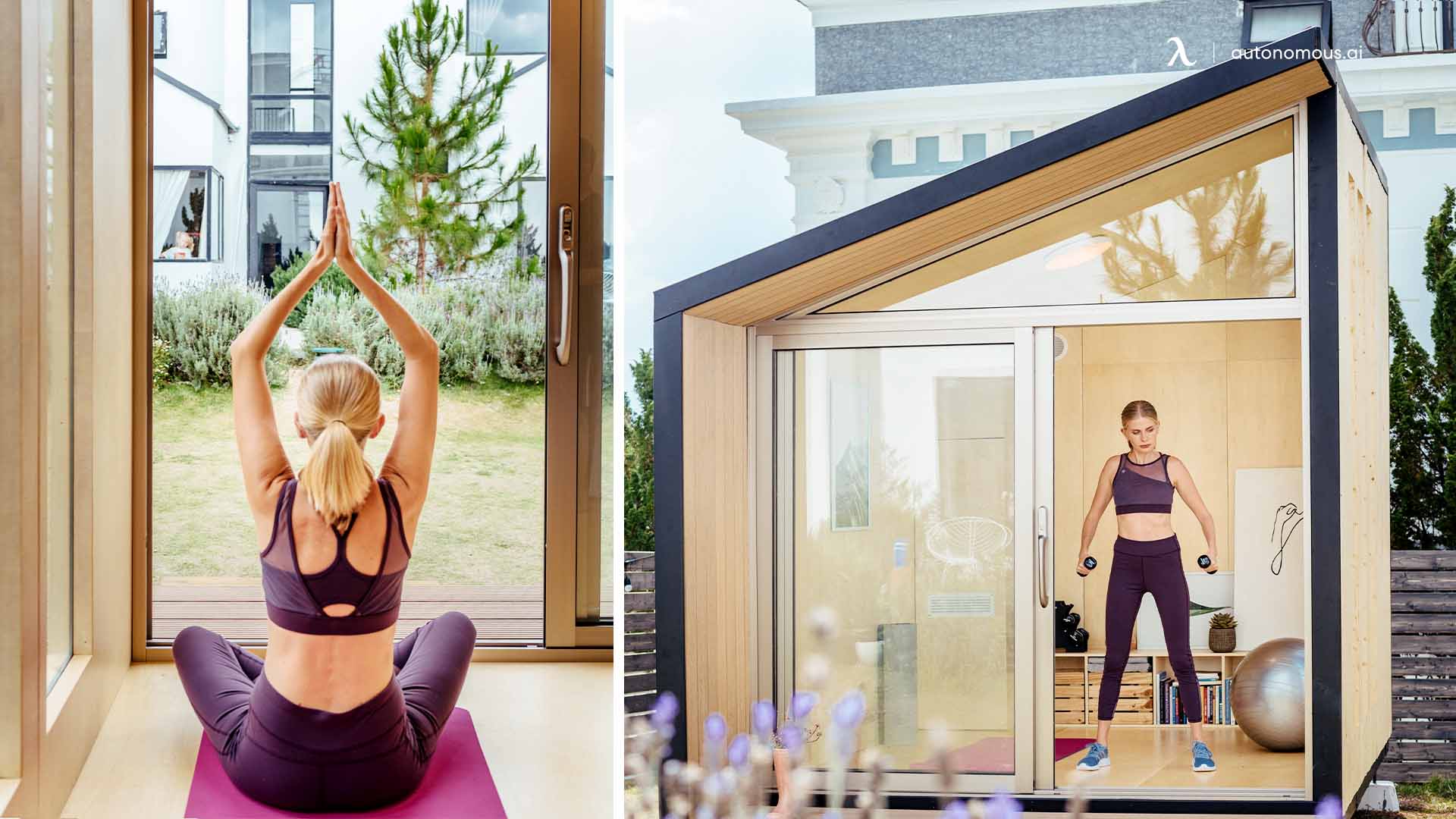
- Kettlebell Deadlifts:
This works your posterior chain—glutes, hamstrings, and lower back—all of which support upright posture and prevent fatigue from prolonged standing.
How to do it:
Stand with your feet shoulder-width apart and place the kettlebell between them. Hinge at the hips (not the waist), keeping your back flat and core tight, and lower the kettlebell by bending your knees slightly. Stand back up by squeezing your glutes. Repeat for 10–12 reps.
My tip: Start light and focus on form. I always do a quick check in the mirror or reflective surface to make sure I’m not rounding my back.
4. Stability Or Balance Discs
Balance boards are inflatable cushions that you can place under your feet or on your chair to improve your balance and engage core muscles while you work.
If you’re new to them or want ideas to expand your routine, these balance board exercises for a standing desk are a great place to start.
- Core Engagement:
This activates your stabilizing muscles—especially in your core, ankles, and glutes—helping improve balance, posture, and joint health over time.
How to do it:
Place a balance disc (or wobble cushion) under one or both feet while standing at your desk. Stand still and engage your core to maintain balance. Start with 30-second holds and work your way up.
My tip: I alternate feet every few minutes to stay even. If you're on a call or writing something light, this is a great standing desk exercise to lose weight.
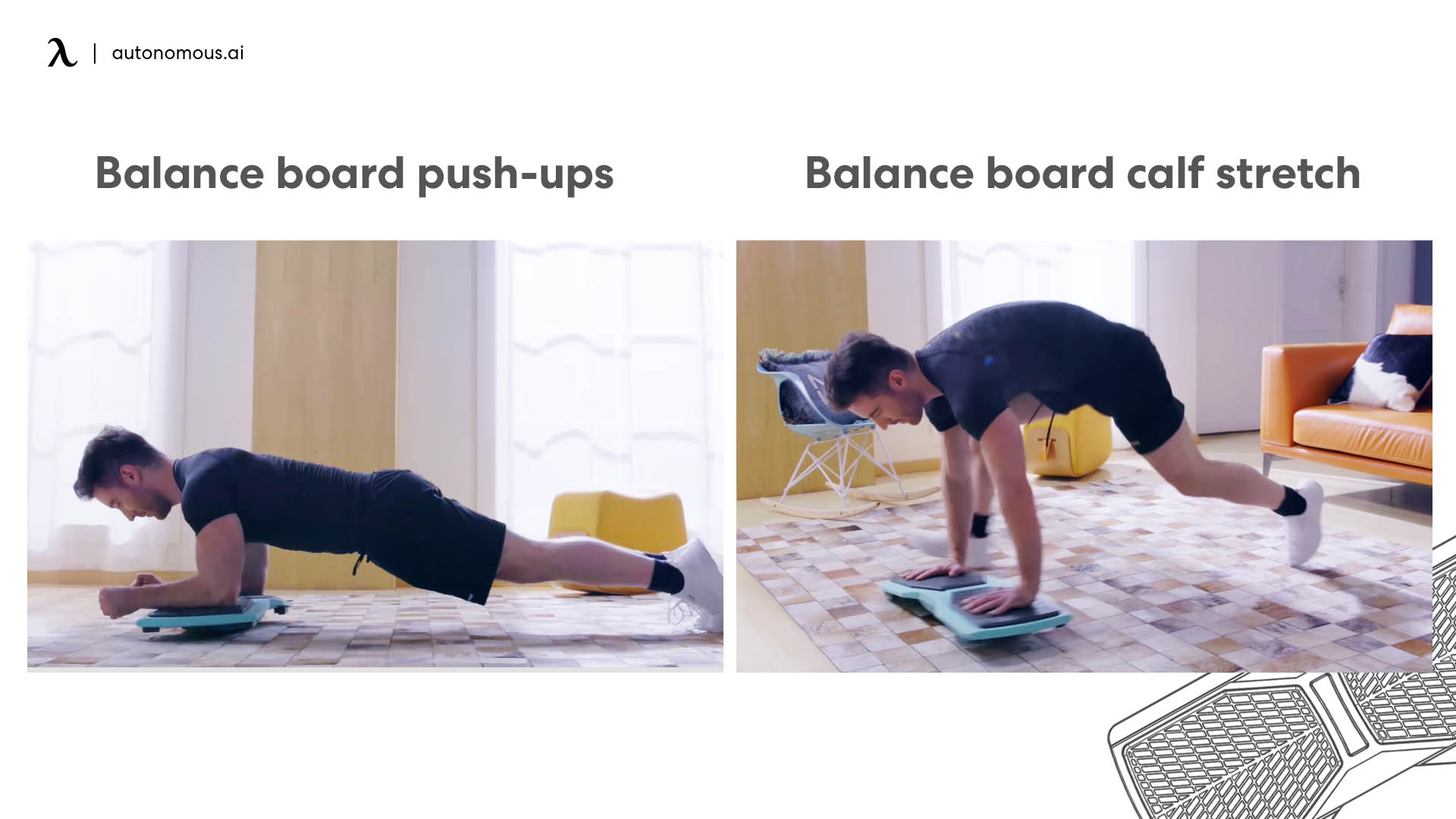
- Dynamic Calf Raises:
This version of the calf raise increases balance demands while strengthening your lower legs and improving proprioception.
How to do it:
Stand with both feet on the disc and slowly rise onto your toes. Hold for a few seconds, then lower back down. Do 10–15 reps.
My tip: It’s harder than it looks! Keep your desk within reach for balance, especially during the first few rounds.
5. Portable Pedal Exerciser
This is a great standing desk exercise while working to sneak in cardio, promote circulation, and stay mentally alert, especially during sedentary tasks like reviewing reports.
How to do it:
- Place the pedal exerciser under your desk while standing or sitting.
- Pedal slowly and consistently for 5–10 minutes at a time.
- You can also place it on top of your desk and use your hands to work your arms and shoulders.
My tip: I use it for 5-minute bursts every couple of hours. Bonus: It helps fight off the afternoon energy slump better than coffee.
6. Treadmill Or Walking Pad
If you're considering walking while you work, exploring a standing desk for treadmill can be a great place to start—it’s designed to support movement without disrupting focus.
Integrating a treadmill or walking pad with your standing desk allows you to walk while working, providing numerous health benefits.
- Walking While Working:
Set the treadmill at a slow pace (1-2 mph) and walk while you type, take calls, or attend virtual meetings. This keeps you active without interrupting your productivity.
- Cardiovascular And Posture Benefits:
Walking helps improve heart health, boosts energy, and promotes better posture by keeping your body in motion throughout the day.
My Daily Standing Desk Exercise Routine At Work
Over the years of using a standing desk, I’ve built a flexible, approachable routine that includes every exercise to do at a standing desk that supports energy, posture, and full-body movement.
These are my go-to standing desk exercises while working—easy enough to slip into a quick break, but effective enough to support posture, energy, and even calorie burn.
Here’s how I maintain doing my standing desk workout throughout the day:
- Calf Raises To Wake Up the Legs
I often start with a set of calf raises—rising slowly onto the balls of my feet, holding for a few seconds, then lowering back down. It’s a small but powerful exercise to do at a standing desk that gets blood flowing and gently activates my lower legs.
This movement is also incredibly helpful if you’re dealing with circulation issues or looking for ways on how to prevent feet swelling while sitting at a desk.
- Squats For Full-Body Engagement
I weave in squats whenever I feel like my hips or back are locking up. They’re simple and effective: I lower into a seated position without the chair, using my core and glutes to stabilize. Even just 10 slow, controlled reps instantly reset my posture and remind my muscles to support me properly.
- Upper Back And Shoulder Openers
Shoulder tension creeps up on me when I’m in the zone. So I regularly do arm circles, pulses, and upper back stretches—extending my arms, rounding the shoulders, and releasing built-up tightness.
These moves help reverse the forward hunch we all fall into while typing or scrolling. Ideal if you’re looking for realistic standing desk exercises while working that don’t interrupt your flow.
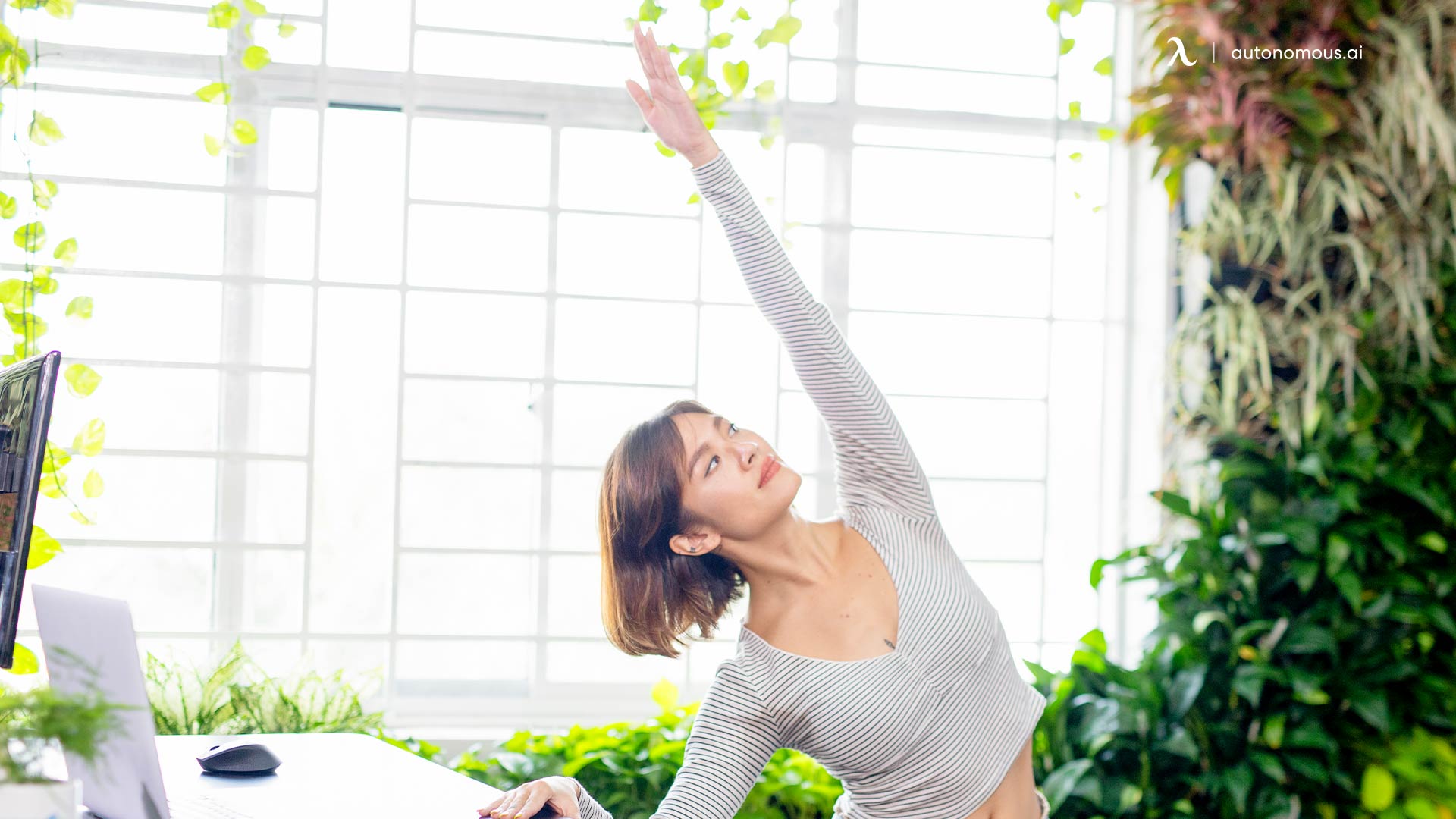
- High Knees To Recharge My Energy
When I’m feeling low on energy, I do standing high knees for a minute or two, bringing each knee toward my chest in an exaggerated marching motion. This gets my heart rate up, clears brain fog, and brings me back to my work feeling sharper.
- Desk Pushups For Upper Body Activation
Using my standing desk as a prop, I do modified pushups, keeping my body straight and lowering myself in a slow, controlled motion. This activates my arms, chest, and core while encouraging better alignment and reducing upper-back fatigue.
It’s not about standing all day—it’s about finding the right rhythm. If you’re unsure how long you should stand at a standing desk, I recommend alternating every 30–60 minutes based on how your body feels. That balance helps me stay productive without the strain.
How I’ve Learned To Maintain My Routine At Work
It’s easy to assume that you need big chunks of time or a strict schedule to stay active during the workday. I used to think that, too, until I realized the real key is consistency in small movements.
Over the years, I’ve found that building a sustainable standing desk workout routine at work doesn’t require extra hours. It just takes small, intentional changes to how we move through the day.
Here’s what’s helped me—and what might work for you too:
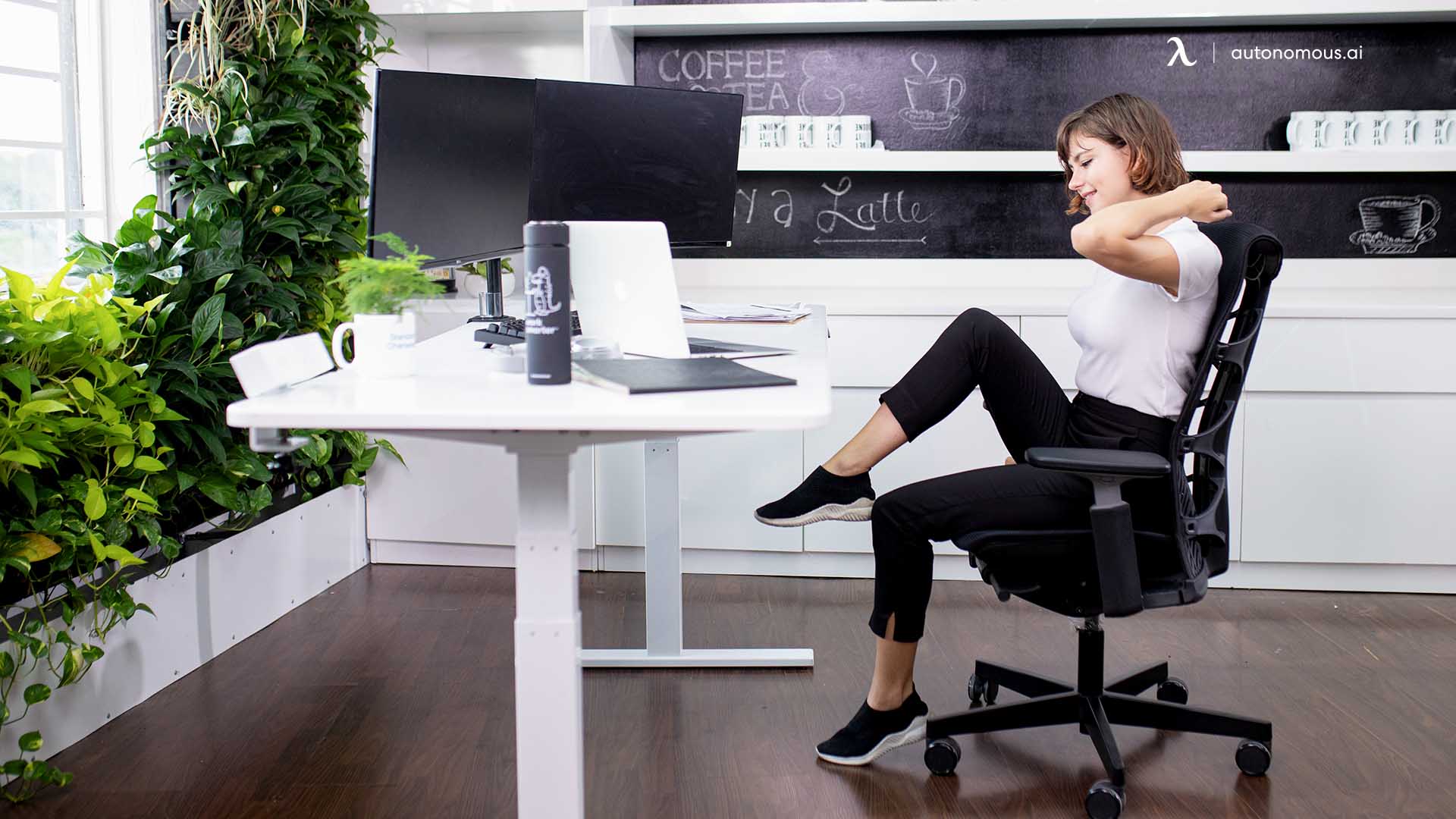
- Use Gentle Reminders
In the beginning, I used reminders on my phone to nudge myself to do standing desk ab exercises every hour. It wasn’t about strict discipline—it was about building awareness. Over time, I didn’t need the alerts anymore; my body started reminding me on its own.
Try subtle cues, like placing your water bottle out of reach or standing on the best anti-fatigue mat for a standing desk that subtly encourages movement and reduces leg fatigue.
Create A Workspace That Encourages Movement
Your environment shapes your habits, and having a standing desk setup that supports small, frequent movements makes it easier to stay active without overthinking it.
Little upgrades, like those found in the best standing desk accessories, can make your workspace more functional and movement-friendly without disrupting your routine.
Once I switched to a standing desk, movement became much easier to integrate. I also intentionally placed things just out of arm’s reach, so I had to stand, stretch, or pivot to grab them.
To make the most of your setup, it's worth brushing up on how to stand at a standing desk—posture really does make all the difference.
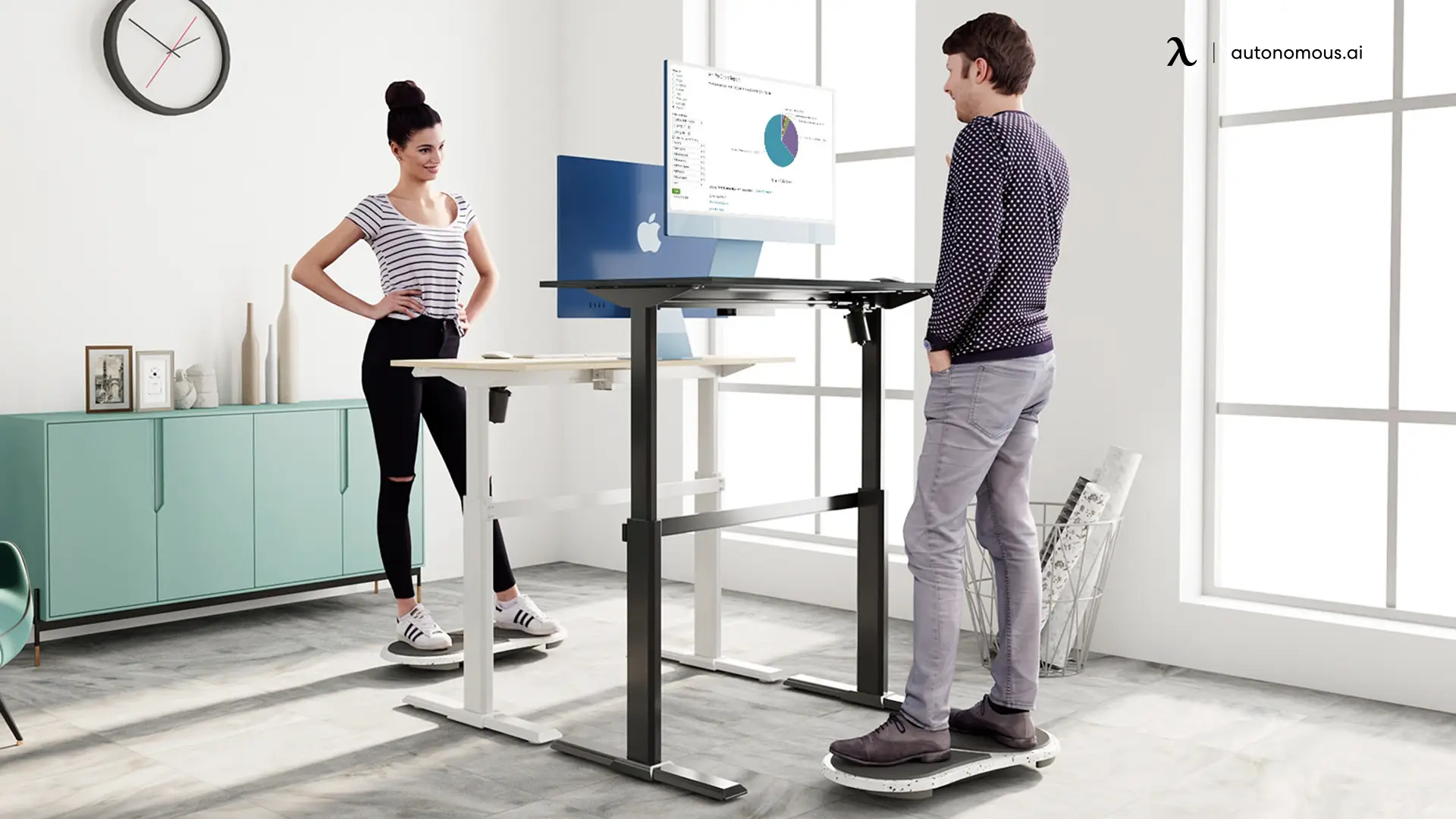
- Move With Purpose During Breaks
I used to scroll through my phone during breaks until I realized how much better I felt after a quick stretch or a lap around the room.
Now, I choose movement—walking, stretching, or even a few yoga poses—because it truly helps me reset.
This is the biggest lesson I’ve learned—movement doesn’t have to be perfect or intense to be valuable. Just keep moving, however you can. The consistency of small actions will compound into better posture, more energy, and less pain by the end of the day. And when paired with proper standing desk posture, these mindful breaks can make your workday feel smoother and more sustainable.
FAQs
1. How to exercise while standing at a desk?
Exercising at a standing desk is all about small, intentional movements. You can do calf raises, glute squeezes, squats, or desk pushups without interrupting your workflow.
2. Is a standing desk good exercise?
Standing itself isn’t exercise, but it’s a healthier starting point than prolonged sitting. A standing desk gives you the freedom to move more, stretch more, and engage your muscles throughout the day.
3. What is the best routine for a standing desk?
The best routine for using a standing desk includes alternating between sitting and standing, incorporating short movement breaks, and performing simple exercises regularly.
4. How to exercise while working at a desk?
To exercise while working at a desk, choose small, efficient movements that fit naturally into your workflow. Simple bodyweight movements like squats, glute squeezes, or stretches are great exercises to do at a standing desk without interrupting your tasks.
Conclusion
These exercises to do at a standing desk help you avoid the physical strain of standing still or sitting for too long and make it easier to meet the 30 minutes of daily activity recommended by health experts. They’re especially helpful if you're managing discomfort or using a standing desk for back pain, as they support core engagement, spinal alignment, and healthy movement habits.
What I’ve found—and what I hope this guide shows—is that movement doesn’t have to interrupt your day. Whether it’s a quick set of squats between meetings or a round of glute squeezes during emails, each small action adds up to better long-term health.
Spread the word
.svg)

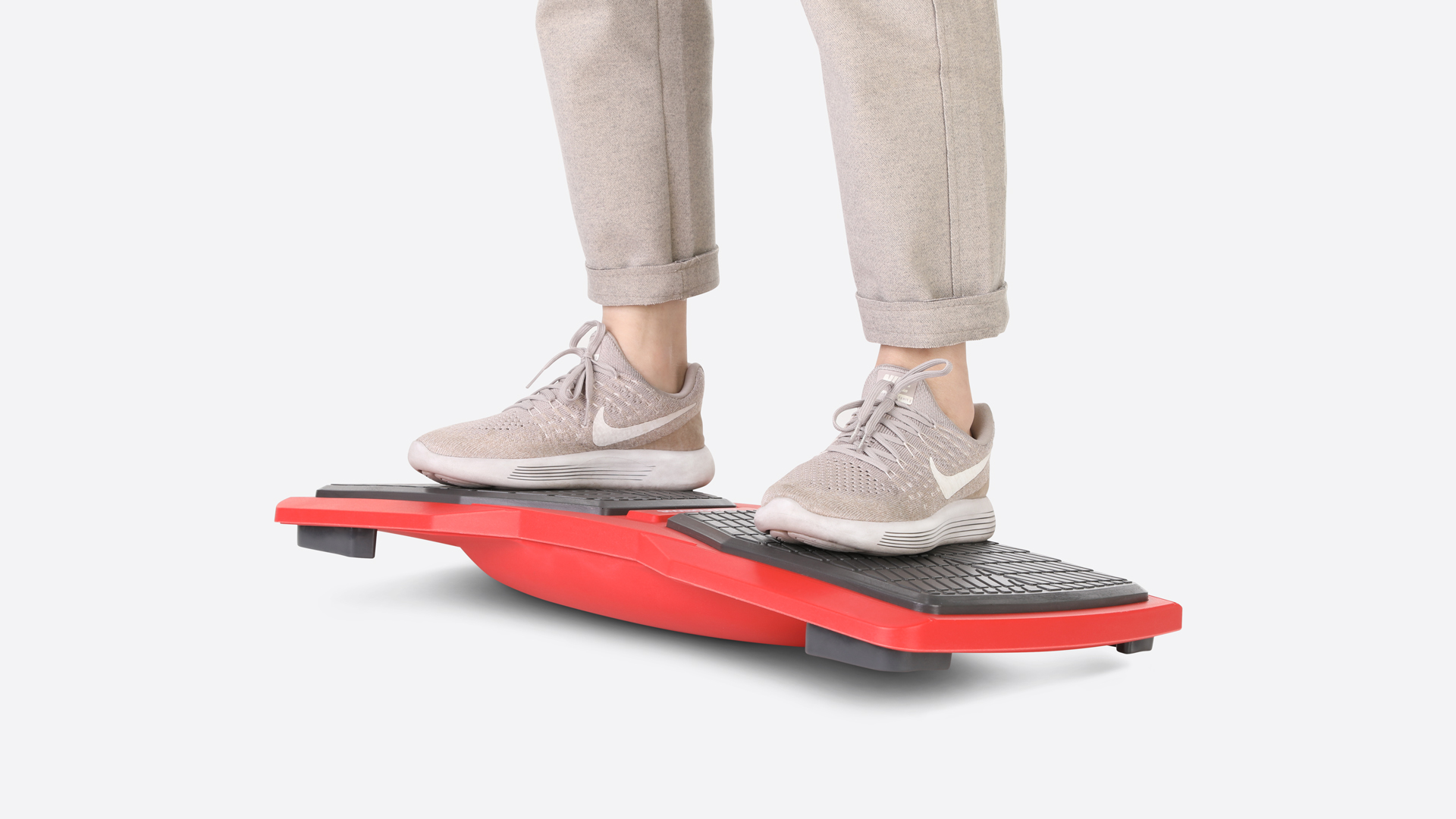


/https://storage.googleapis.com/s3-autonomous-upgrade-3/production/ecm/240410/Autonomous(4).jpg)

